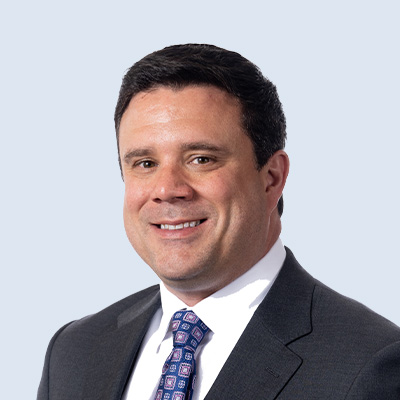Sean Ryan: Hi, this is Sean Ryan, principal would be Alexander Group and co-leader of our tech practice, I’m here with my colleague Ted Grossman, who also co-leads the practice, and we’re here to talk about issues that we’re seeing in the technology industry. And Ted, one of the the biggest game changers that I’ve seen in tech in quite a while, is this move from selling into strictly IT buyers CIO the glass house moving from that to really selling to more functional buyers within the line of business know product marketing, finance HR, a lot of functional buyers within organizations playing a much bigger role. You know, wondering if you’re seeing that with your clients as well?
Ted Grossman: Yeah, no, absolutely. I concur. It’s something that I would say it comes up at least 50% of the time, and it’s something that people have talked about for a long time in terms of, you know, moving from product sales to solution sales. But fundamentally, what we’re seeing now is a whole set of new buyers that if you’re going to grow and exceed the growth expectations of your industry and where your leadership and your board is coming from, you have to start penetrating these buyers. And so the questions that we get a lot is how can we get into this new set of buyers and expand our growth within account?
Sean Ryan: Well, yeah, I think there are a couple of factors at play there, too. First of all, the cloud is really changing everything. It’s making the barriers to entry a lot less stringent. You don’t need the huge IT footprint on the seller side to really get something sold. They’re still an influencer in a lot of cases. But you know, the light footprint of cloud helps make it easier for a lot of business consumers to really consume the technology, right? And then you’ve got the second piece of it, which is that these business users are just a lot more informed about the capabilities of products. They’ve done their homework, they’ve gone to user panels and blogs and gathered information from all over the web to really figure out what the solution they need really looks like. So the empowered consumer is really driving this as well.
Ted Grossman: Absolutely. And you know, I would say the only thing I would add to that is we’re also seeing a lot of companies where they’re viewing technology as not just something that they use internally, but something that they use to actually create competitive advantage within their own organizations.
Sean Ryan: Right. I agree with all that, and I think it’s really kind of fundamentally changing a lot of clients that we’re working with. So, you know, maybe we’ll take a look at some of the challenges here and really start to understand what is the scope of this problem that our clients are facing and then maybe layer on how are they dealing with it? So when you think about what you’re seeing with some of your clients, what are you seeing in terms of challenges moving from the traditional IT buying space over to the line of business?
Ted Grossman: It’s an interesting problem. And I think the first thing that I always start with is it’s an and not a replacement for it. So the biggest challenge right off the bat is you now have your traditional IT buyers and you have all these influencers and potential business buyers with your own business solutions, and that creates huge complications. Most companies, most salespeople in technology, they have nurtured relationships for many, many years with their IT professionals. Now they have to go into new parts of the organization, understand those business problems that people have been able to have a good discussion about what those issues are and help them address it. So that’s the hardest one is just it’s a new set of people they have to go after. It also creates complexity because while you’re working with two buyer groups, it’s often not buying it by themselves or the line of business by buying sales, but a combination of the two. So understanding the dynamics and the politics of that buying process is a critical new skill sometimes that our clients don’t have.
Sean Ryan: Right? Yeah, Ted, that’s interesting. You know, I was in a client very recently and we were talking about how they’re moving toward line of business buyers and really trying to make that transition. But when they look at their customer base, all of their contacts within customer accounts or it so even the customer database really has to be reoriented to think about what are these new groups of buyers look like? Maybe we can shift the discussion here to what some of the leading companies that we’re working with are doing to combat some of these challenges.
Ted Grossman: Yeah, no, that’s great. And I think it’s a good place to start is, how do I go out and find the right people to talk to in the first place? There’s a couple of balances to that. One is, can I just look at my customer base, the types of customers I have and start seeing patterns of different type of business buyers and different types of use cases that I can sort of present my solutions to so really high level segmentation. But in the context of I’m selling to business buyers, this might take a company that might look relatively small from a traditional how much it spend they usually have. That might make them highly important because within a particular vertical, for example, they might be the next to. At which case, it’s very critical that you get out ahead of that and sell to them. So the first part is just that segmentation piece. And I think the second piece is once you understand who your segments are and what the messages are that you want to get out to them, really a new focus on lead generation working very, very closely with your marketing counterparts to get the message out. And then whether it’s through the internet or other types of campaign type of selling, coming back and identifying places where you can get into those leads so that you actually have the chance to go talk to them.
Sean Ryan: Yeah, no, it’s a great point. And one of the things that we’re seeing is really talk about the value messages and the use cases. We really see an evolution in the value proposition of tech companies in this space. When you start talking about business value drivers rather than the traditional technical capabilities, speeds and feeds we used to call them. We’ve got a lot more customers that are focused on driving value messages into these line of business buyers, things like ROI efficiency gains, even in some cases. What will the technological solution generate for you? With respect to incremental revenue across reduction? So it’s, you know, a lot of our clients are experimenting with different types of tools, capabilities and even sellers that can go in and really put together compelling business case for that particular customer.
Ted Grossman: Yeah, I mean, what I find fascinating, you and I have both been selling in the technology space for a long time to technology vendors, our services. But if you go and talk to people in manufacturing or medical device or pharmaceutical or agricultural products, it really doesn’t matter. What you’re finding in all these industries is that the solutions that they’re offering are more than just their products. They’re offering knowledge, they’re offering insights on top of their core products. What does this mean? It means that the line of business buyer often is a technology user and a technologist to some extent, and this is how they’re going to create competitive differentiation. If your salespeople know how to have that conversation, then you are off to the races.
Sean Ryan: Well, yeah, and absolutely. It requires increasingly a level of vertical expertise to be able to pull that off. You really got to understand the dynamics of the industry that you’re selling into that sort of table stakes. Now for these line of business customers, they really have high expectations and knowledge around the technology and expect you to be able to talk to some of the things you’ve seen as a seller in other industries. So that vertical dimension is becoming more important to, you know, we could really talk about this for a long time. And it’s just the first of a series of discussions that we’re having as the Alexander Group with our clients. We’ve got a cloud symposium coming up in San Francisco at the end of August, and that will be a deep dive into some of these issues with clients and prospects. We’ve also got the Executive Forum coming up, and we’re going to do a dedicated talk track around some of these issues that Ted and I have been talking about.
Ted Grossman: Yeah, I think importantly is we can help frame what we see and we can put some numbers together and show some interesting statistics about where some of these trends are. But most importantly, it’s an opportunity to hear from your colleagues and your peers and other companies. What are they doing? How are they addressing these challenges? So we look forward to having you there.
Sean Ryan: And in the meantime, if you’ve got any additional issues that you’re dealing with around the tech industry would love to direct you to our website. It’s www.alexandergroup.com and click on the tech section for a lot of specific information that you can use within your organizations to help master some of these issues and the many others that you deal with on a daily basis. So with that, we’ll bid you goodbye and thank you. We hope to meet and talk with you soon. Thank you.



